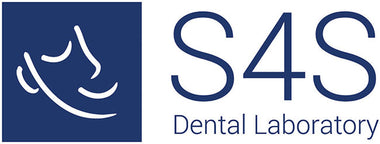Why Do My Gums Hurt in One Spot?
Sharp or throbbing pain in your gums can be distracting, painful and make eating or brushing uncomfortable.
When there’s no obvious cause, it often leaves you feeling concerned and unsure what to do next.
Pain in a specific area of the gums is often linked to something minor like food debris or a mouth ulcer.
But in some cases, it might be the early warning sign of an infection or inflammation that needs attention. Spotting the cause early means you can deal with it quickly and avoid things getting worse.
Here are some of the most common reasons for gum pain in one area, along with simple ways to manage the discomfort and protect your oral health.
1) Food trapped between teeth
This is one of the most common reasons for pain in a particular spot.
Food can get lodged between the teeth or just under the gumline and go unnoticed until the area becomes sore or swollen.
If food stays trapped, it can irritate the surrounding tissue and lead to localised inflammation.
What to do:
Try gently flossing and rinsing with warm salt water.
If the pain doesn’t settle or the area still feels sore, book in with your dentist. They can safely remove any trapped food and check for infection.

2) Early gum infection
Pain in one part of the gum can be an early sign of gingivitis affecting a small area.
This often happens when plaque builds up and isn’t thoroughly removed during brushing or flossing.
You might notice that the gum:
- Looks red
- Feels sore to touch
- Bleeds slightly when brushing.
These are signs of inflammation and should be taken seriously.
Left untreated, gingivitis can develop into more advanced gum disease.
What to do:
Make sure you maintain excellent oral hygiene, brushing and flossing regularly.
A professional clean and some simple changes to your oral hygiene routine can usually reverse gingivitis if caught early.
3) Canker sore or ulcer
Mouth ulcers are small, round sores that can appear on the gums and feel very painful even though they are tiny.
The pain is often sharp or stinging and concentrated in one spot.
They can be triggered by things like stress, hormonal changes, injury from brushing or eating, or even certain foods.
What to do:
Ulcers usually clear up within a week.
It's a good idea to avoid spicy or acidic foods while it heals and try using a protective gel or rinse to ease the discomfort.
If the sore lasts longer than two weeks or keeps coming back, speak to your dentist.

4) Trauma or irritation
A sore spot on the gums might be the result of recent irritation. Crunchy foods like popcorn or seeded bread can scratch the gum.
You might also have bruised or scraped the gum by brushing too hard or using a toothbrush with firm bristles.
What to do:
Switch to a soft-bristled toothbrush and be extra gentle until the area has healed.
If the pain doesn't ease up or the area looks inflamed, it’s worth having it looked at to rule out infection or further damage.
5) Dental abscess
A dental abscess is a more serious cause of gum pain and needs urgent attention.
If the pain feels deep, pulsing or constant, it could be caused by an infection around the root of a tooth or within the gum.
You might also notice:
- Swelling
- A bad taste in your mouth
- A small bump near the affected spot.
What to do:
An abscess won’t get better on its own.
Your dentist can drain the infection, relieve the pain and prevent further damage to the tooth and surrounding tissue.

6) Erupting or impacted tooth
If you're experiencing pain towards the back of your mouth, particularly near the molars or wisdom teeth, the discomfort might be linked to a tooth breaking through or being partially impacted.
This is especially common in younger people or those with limited space in the jaw.
The gum in the area might feel sore, swollen, or tender to pressure.
What to do:
Your dentist can check the position of the tooth with an X-ray and recommend the best next steps.
Localised pain doesn't aways mean localised problems
Sometimes pain feels like it’s coming from one exact spot, but the root cause might actually be somewhere else.
For example, a cracked tooth or inflamed nerve can send referred pain to a nearby gum.
Similarly, bite problems or clenching habits can put pressure on one area, causing soreness that feels like gum pain.
This is why it’s important to get a proper diagnosis if the pain doesn’t improve.
Your dentist will look beyond the surface to find out what’s really going on.
What your dentist will check for
At your appointment, your dentist will examine the painful area and ask about your symptoms.
They may:
- Check for signs of trapped food or plaque
- Examine the gums for swelling, bleeding or infection
- Assess your bite and jaw function
- Look at dental appliances like braces, aligners or dentures
- Take x-rays if needed to see under the surface
Once the cause is identified, they’ll guide you through the next steps for treatment.
That could be as simple as a clean and some advice, or it might involve further care depending on what’s found.
Don't ignore your painful gums
Gum pain in one spot is a common issue, but that doesn’t mean it should be ignored.
From something as simple as a bit of trapped food to early signs of infection, there are plenty of reasons why it might be happening.
The good news is that most causes are easy to treat, especially if you act early.
If the pain doesn’t go away or you're worried about what’s behind it, book a check-up.
A quick visit to the dentist can give you peace of mind and help prevent more serious issues down the line.

